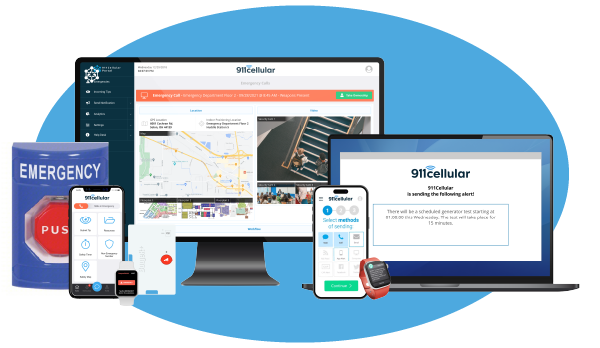Learn how healthcare workers can protect themselves from workplace violence with these safety measures.
Understanding the Importance of Workplace Violence Prevention
Workplace violence is a serious issue that poses a significant threat to the safety and well-being of healthcare workers. It encompasses a range of behaviors, including physical assault, verbal abuse, and harassment. The impact of workplace violence extends beyond the individual worker, affecting the overall quality of patient care and the functioning of healthcare organizations.
Preventing workplace violence is of utmost importance to ensure the safety and security of healthcare workers. By implementing effective prevention strategies, healthcare facilities can create a safe and supportive environment for their employees.
One key aspect of understanding the importance of workplace violence prevention is recognizing the potential consequences it can have on healthcare workers. Physical injuries resulting from violence can lead to long-term health problems and even disability. In addition, the psychological impact of workplace violence can be severe, causing anxiety, depression, and post-traumatic stress disorder (PTSD). These mental health consequences can significantly affect the well-being and job satisfaction of healthcare workers.
Furthermore, workplace violence can disrupt the delivery of healthcare services and compromise patient safety. When healthcare workers are subjected to violence, their ability to provide optimal care may be compromised, leading to errors, decreased efficiency, and an overall decline in the quality of patient care. Addressing workplace violence is therefore essential to maintain a high standard of healthcare and ensure the well-being of both healthcare workers and patients.
Identifying the Types of Workplace Violence in Healthcare
In order to effectively prevent workplace violence in healthcare, it is crucial to understand the different types of violence that can occur. There are four main categories of workplace violence in healthcare:
- Type 1: Criminal Intent - This type of violence involves individuals who have no relationship with the healthcare facility but enter with the intent to commit a crime, such as robbery or assault. These incidents are often unpredictable and can pose a significant threat to the safety of healthcare workers.
- Type 2: Client/Patient-Related - This type of violence occurs when patients or clients become agitated, aggressive, or violent towards healthcare workers. It can be triggered by various factors, including mental illness, substance abuse, or frustration with the healthcare system.
- Type 3: Worker-on-Worker - This category involves violence between healthcare workers within the same organization. It can result from conflicts, disagreements, or unresolved issues between colleagues.
- Type 4: Personal Relationship - This type of violence occurs when an individual, such as a current or former employee, has a personal relationship with someone within the healthcare facility and engages in violent behavior.
By understanding these different types of workplace violence, healthcare organizations can develop targeted prevention strategies to address each category effectively. This includes implementing security measures, improving communication systems, and providing training to healthcare workers on how to de-escalate potentially violent situations.
Implementing Physical Security Measures
Physical security measures play a vital role in preventing workplace violence in healthcare. These measures aim to create a secure environment that deters potential perpetrators and provides a sense of safety for healthcare workers. Some key physical security measures that healthcare organizations can implement include:
- Access control systems: Limiting access to certain areas of the facility to authorized personnel only can help prevent unauthorized individuals from entering and causing harm. This can be achieved through the use of ID badges, key cards, or biometric systems.
- Security cameras: Installing surveillance cameras in strategic locations can deter potential perpetrators and provide evidence in case of an incident. It is important to ensure that cameras cover all critical areas, such as entrances, hallways, and parking lots.
- Panic buttons and alarms: Providing healthcare workers with panic buttons or alarms that they can activate in case of an emergency can enable a quick response from security personnel or law enforcement.
- Adequate lighting: Well-lit areas can help deter potential perpetrators and improve visibility, making it easier to identify and respond to any suspicious activity.
By implementing these physical security measures, healthcare organizations can significantly reduce the risk of workplace violence and create a safer environment for their employees.
Enhancing Communication and Reporting Systems
Effective communication and reporting systems are crucial for preventing workplace violence in healthcare. These systems ensure that incidents are promptly reported, investigated, and addressed, allowing for timely intervention and prevention of future incidents. Some key strategies to enhance communication and reporting systems include:
- Encouraging reporting: Healthcare organizations should create a culture that encourages employees to report any incidents or concerns related to workplace violence. This can be achieved by providing multiple channels for reporting, ensuring confidentiality, and implementing non-retaliation policies.
- Incident documentation: Establishing a standardized process for documenting incidents of workplace violence ensures that all relevant details are recorded accurately. This documentation can then be used for analysis, identifying patterns or trends, and implementing targeted prevention strategies.
- Training on reporting procedures: Providing training to healthcare workers on how to recognize, document, and report incidents of workplace violence is essential. This training should not only cover the reporting process but also educate employees on the importance of reporting and the potential consequences of not reporting.
- Communication platforms: Implementing effective communication platforms, such as secure messaging systems or incident reporting apps, can streamline the reporting process and ensure that information reaches the appropriate individuals quickly.
By enhancing communication and reporting systems, healthcare organizations can create a supportive environment where employees feel empowered to report incidents and contribute to the prevention of workplace violence.
Providing Training and Education for Healthcare Workers
Training and education are essential components of preventing workplace violence in healthcare. By equipping healthcare workers with the necessary knowledge and skills, organizations can empower them to recognize and respond to potentially violent situations. Some key training and education initiatives include:
- De-escalation techniques: Healthcare workers should receive training on de-escalation techniques, which involve strategies to calm agitated or aggressive individuals without the use of physical force. These techniques can help prevent situations from escalating into violence.
- Self-defense training: Providing self-defense training can empower healthcare workers to protect themselves in case of physical assault. This training should focus on techniques that are appropriate for healthcare settings and emphasize the importance of personal safety.
- Conflict resolution skills: Healthcare workers should be trained in conflict resolution skills to effectively manage disagreements or conflicts that may arise in the workplace. This training can help prevent conflicts from escalating into violent incidents.
- Awareness of warning signs: Educating healthcare workers about the warning signs of potential violence can enable them to identify and respond to potentially dangerous situations. This includes recognizing signs of aggression, agitation, or escalating behavior in patients, clients, or colleagues.
By providing comprehensive training and education programs, healthcare organizations can equip their employees with the tools they need to prevent workplace violence and ensure their own safety.
Learn more about workplace violence solutions for healthcare staff at 911cellular.com
Tags: Hospital violence Healthcare safety Home healthcare Workplace violence








